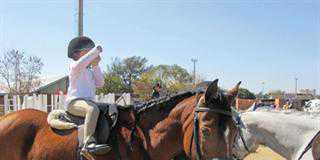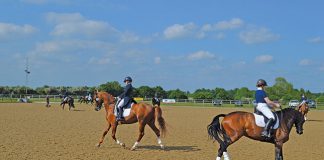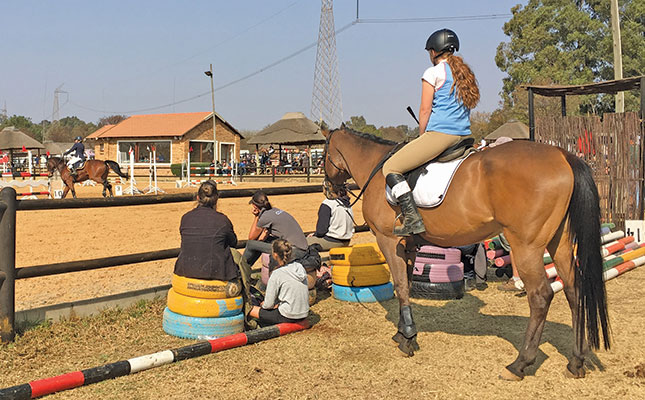I was 19 and studying equine science in England. It was a hot day and I had the honour of raking the endless drive that ran alongside the dressage arenas. Suddenly, the unmistakable sounds of a Johnny Clegg song could be heard.
I looked up from the grey pebbles and saw the most magical sight imaginable: a big chestnut named Lordy floating as if on wind to this beautiful song! At that moment I longed to dance with horses more than I longed for home.
Dressage to music follows quite logically after ordinary dressage – and it’s remarkably easy to do.
The first step is to find out at what rhythm your horse walks, trots and canters, in terms of beats per minute (bpm).
For this, you’ll need a metronome, which can be found at a music shop or a good sports store. Usually a trot will be between 136bpm and 150bpm, a canter between 92bpm and 108bpm and a walk between 98bpm and 110bpm.
Once you’ve established at what pace your horse moves, you’ll need to find three pieces of music, each with a distinctive beat, to match these speeds. You may of course be lucky enough to find one piece that incorporates all three speeds or at least two of them.
If you do end up with two or three pieces, try to ensure that they have a similar style to give the final result a sense of unity. Whatever music you choose, though, make sure you enjoy it; you’re going to hear it over and over again!
Next, ride your horse to the music at a walk, trot and canter – and get a friend with a video camera to film you. This is an easy way to test whether the music works for you and your horse. If the fit is good, you’re ready to start.
Before you do, though, check the required movements for the level at which you’re going to compete. Novice requires a minimum of 20m free walk and 20m medium walk; a 15m circle in working trot on both reins and lengthened strides; 20m canter circles on both reins; and a halt salute at the beginning and end.
Novice and elementary tests must take between four and four-and-a half minutes to complete. You’ll be penalised for going outside this time frame. A guideline for the test is: two minutes of trot, 90 seconds of canter and 45 seconds of walk. This will give you enough time to complete the requirements.
It’s a good idea to choose musical excerpts that allow for interpretation through movement. For example, music that rises to a climax is good for lengthened paces, whereas ideal canter music is made up of a few short phrases. Use a dramatic entrance; this makes the crowd sit up and take notice. And employ a variety of movements during the performance to prevent your horse (and audience!) from growing bored.
It’s a good idea to ask a friend to gauge your performance through the judges’ eyes. The finished performance should look as if you and your horse are dancing along without a care in the world. Dressage to music is a hugely rewarding discipline, and well worth the effort. I’ve found that horses have a great sense of rhythm and respond excellently to the music. What’s more, they enjoy their ordinary dressage much more as a result.
Contact Kim Dyson on 082 888 6511.













